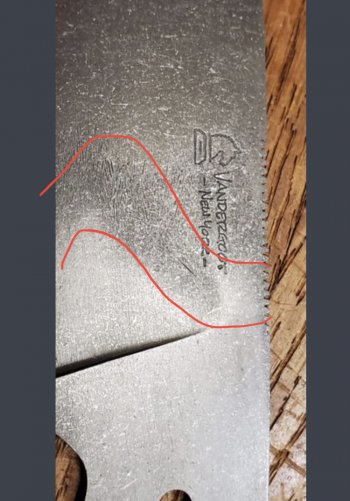Goot
Well-Known Member
Hey! I'm working on my third knife and this is the first time I've tried a stonewashed acid etch. After the etch, I noticed an irregularity in my 1080 steel that appears on both sides with a matching pattern. In the pictures, you'll notice a color change just before the ricasso. Is this from not cleaning it well enough (I thought I did), or from the manufacturing process of the bar stock? If so, would this cause a strength issue?
Camp knife
Camp knife

